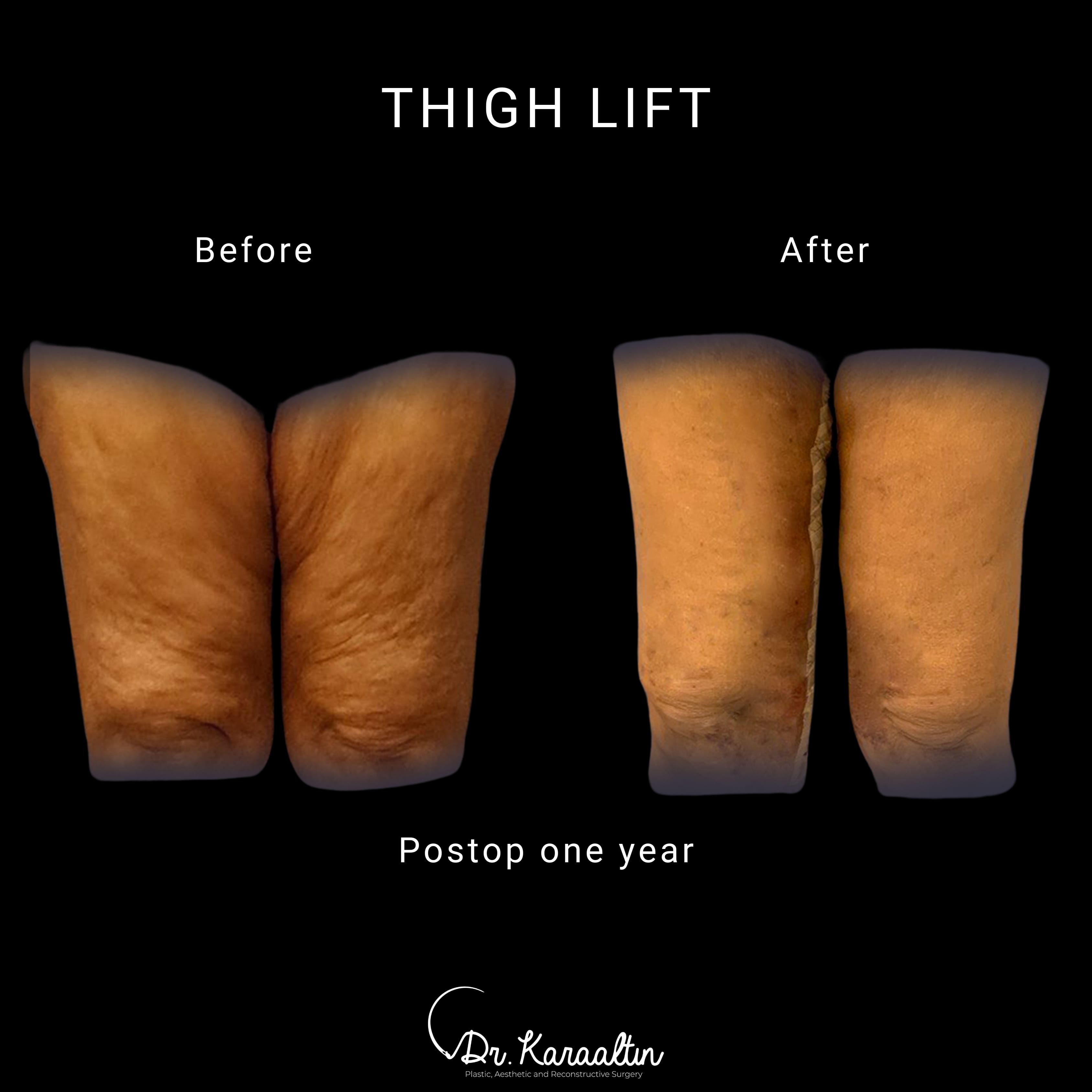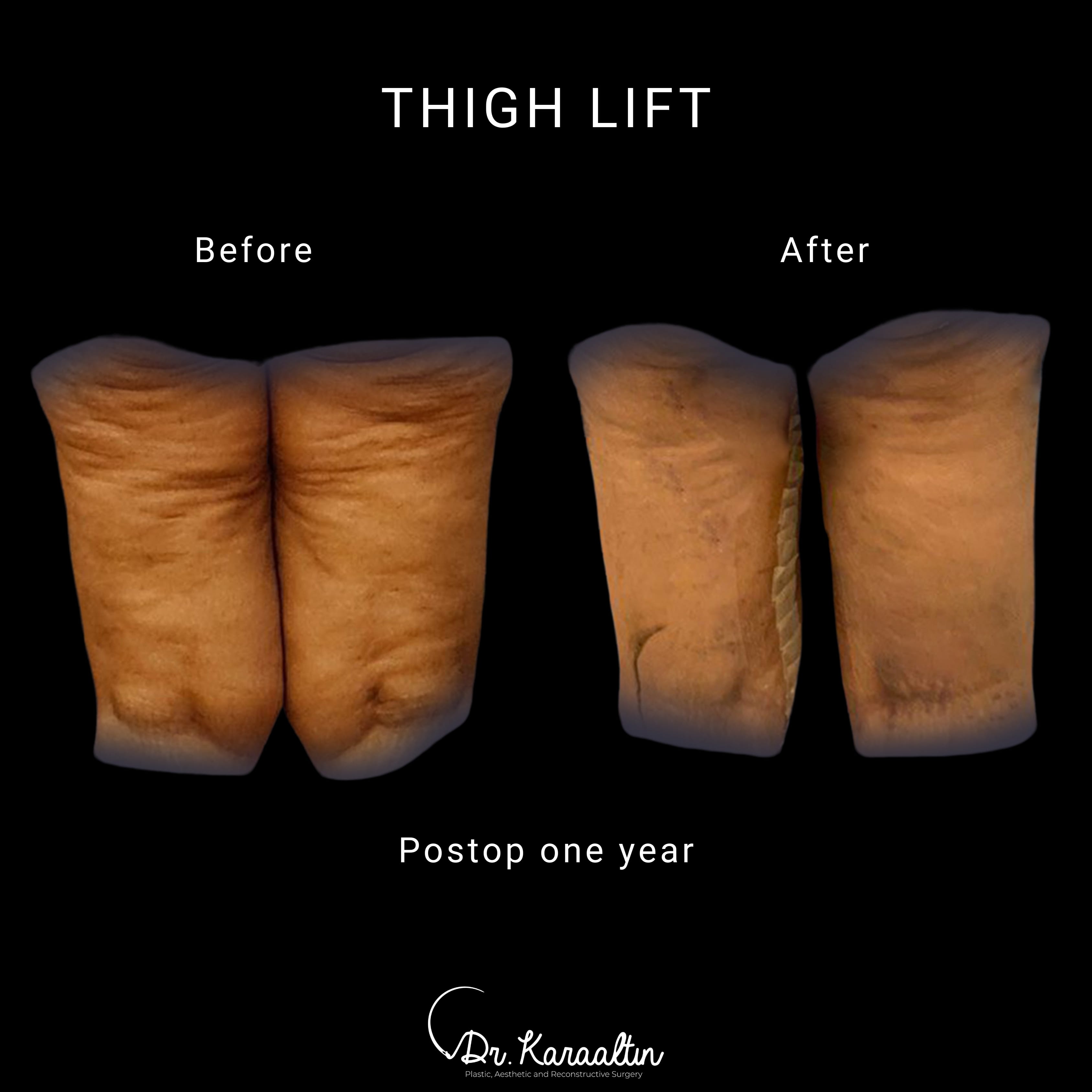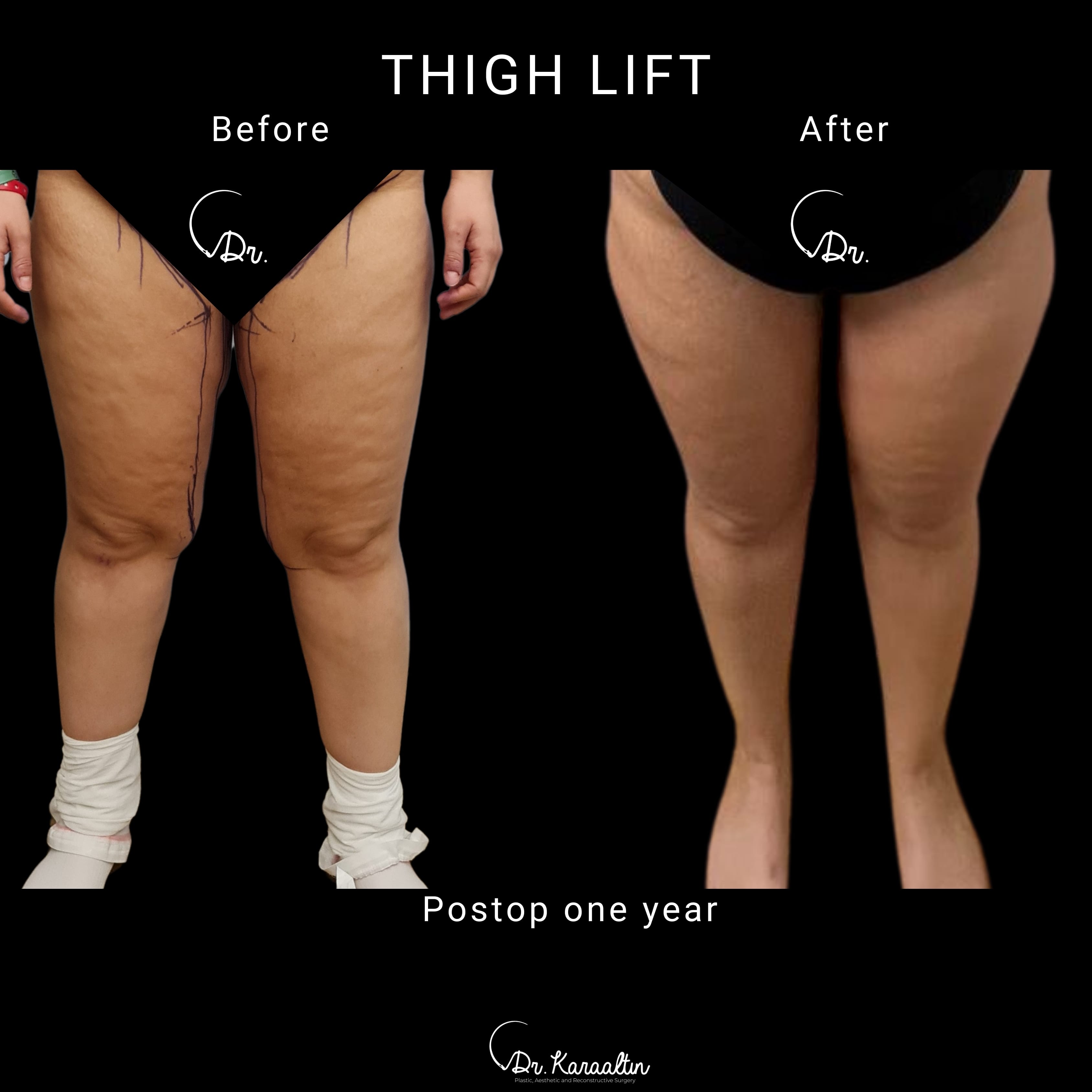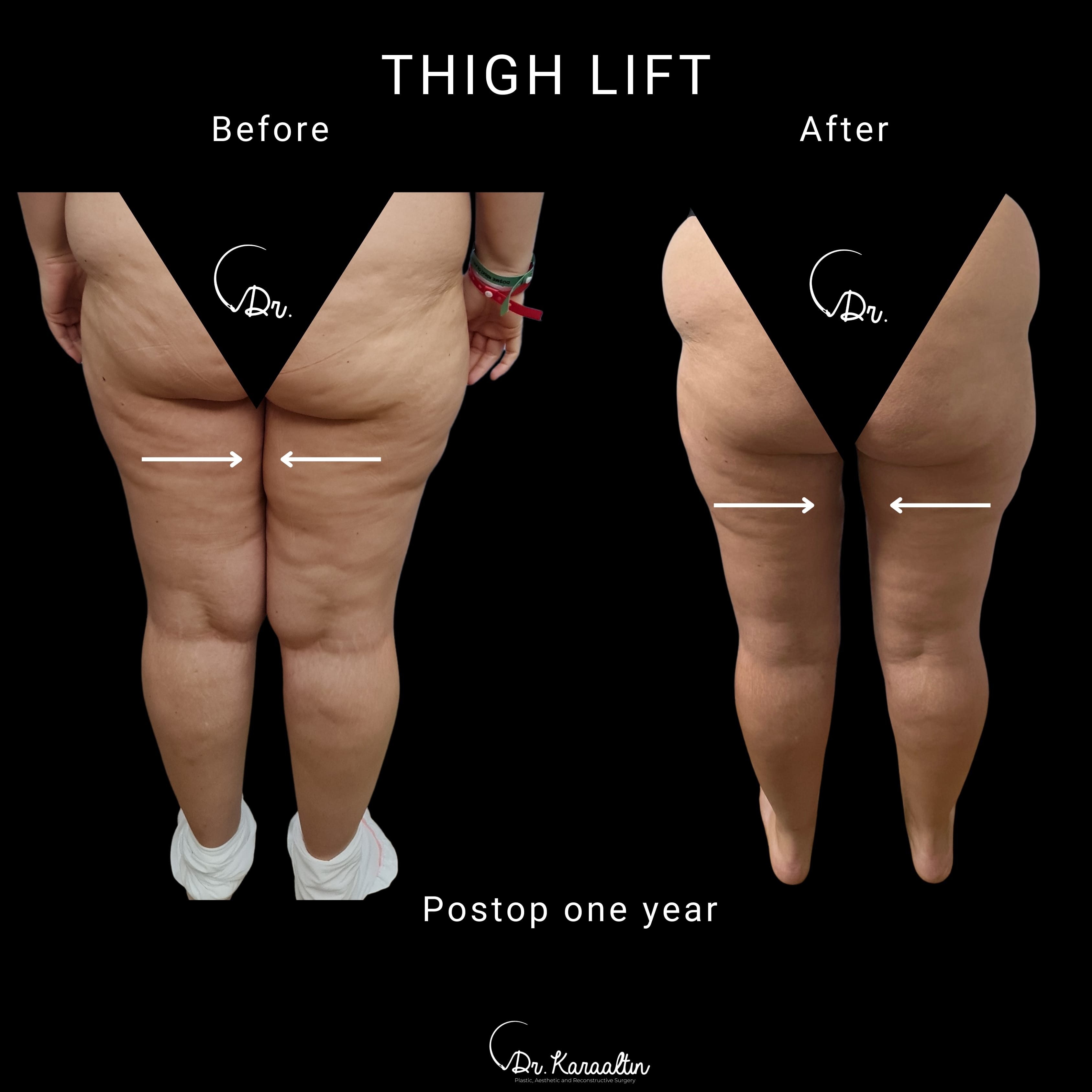

A thigh lift is a surgical procedure that treats excess skin of the inner thigh area. Patients often complain of excess skin of this area after weight loss or with age. As with many aesthetic surgical procedures, the surgical technique used to address this area depends on the severity of the excess skin. In mild cases, certain non-surgical, or minimally invasive procedures, can be performed to help tighten and lift the excess skin and fatty tissue. In other cases, either a short scar or an extended scar procedure is required to achieve maximum results. Extensive measures are taken by to conceal these scars as best as possible, such as aggressive scar management techniques to keep the scars as light and inconspicuous as possible.




This is a cutting-edge method that creates a tension and swelling-free environment in the incision line, promoting accelerated wound healing. This technology can be utilized in all lifting procedures and is highly recommended by Dr. Karaaltın.
The majority of patients who have experienced massive weight loss or developed excess thigh skin with age are highly self-conscious about this area. They complain that clothes do not fit properly, they are unable to wear certain outfits, and they may experience hygiene issues. Some patients simply desire slimmer, tighter-looking thighs. A thigh lift can help you achieve this sleek contour.
Many patients seeking a thigh lift have undergone massive weight loss and require removal of excess skin from several areas of the body including the abdomen, arms, back, breasts and face.
Thigh lift procedures are often a careful balance between scarring and contour. While everyone’s goal is to maximize contour and minimize scarring, sometimes a tradeoff must exist. This tradeoff would eliminate any possibilities regarding thigh lift compactions such as wound breakdowns and lymphedema.
Your recovery will be depending on the type of the thigh lift procedure performed You will likely have a surgical garment with surgical dressings in place. It is normal to have some drainage on these dressings after surgery. Depending on the type of procedure, you may also have some drain tubes in place. These typically are removed a few days to a few weeks after surgery. You will be given a scar care kit and detailed instructions regarding scar management. The optimal recommended resting for the procedure is two weeks. Normal physical activities can resume after six to eight weeks after the procedure.